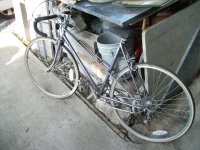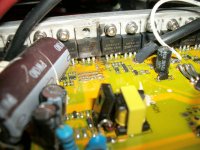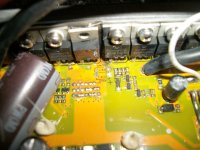nutnspecial
10 MW
I decided to cross a low spot on the river for the first time this year. I guess it wasn't low enough yet. . . 
The water was just high enough to cover bottom of controller (em3 18x 4110) and motor (sensored bht mid) and I also went in with a little gusto causing splashing that prob didn't help. It was a short slowish trip in the water and everything barely got more wet than crossing before. My harness exits the top of controller and didn't get wet at all.
The CA monitors as usual, and the headlight works. Both of which are pack voltage thru controller.
The hwbs (ebrake) lights when engaged as usual (low voltage side). This sensor was the first thing I thought of since it's lowest on the bike.
The throttle does nothing.
Bike dead in the water so to speak.
I don't see how the symptom fits motor + water, even if submersed.
Hwbs operates normally (gauging from led).
Ca (monitor only) and headlight as normal.
What do you think I should look at? Controller? Is there a normal failure mode that fits my symptom?
The water was just high enough to cover bottom of controller (em3 18x 4110) and motor (sensored bht mid) and I also went in with a little gusto causing splashing that prob didn't help. It was a short slowish trip in the water and everything barely got more wet than crossing before. My harness exits the top of controller and didn't get wet at all.
The CA monitors as usual, and the headlight works. Both of which are pack voltage thru controller.
The hwbs (ebrake) lights when engaged as usual (low voltage side). This sensor was the first thing I thought of since it's lowest on the bike.
The throttle does nothing.
Bike dead in the water so to speak.
I don't see how the symptom fits motor + water, even if submersed.
Hwbs operates normally (gauging from led).
Ca (monitor only) and headlight as normal.
What do you think I should look at? Controller? Is there a normal failure mode that fits my symptom?







